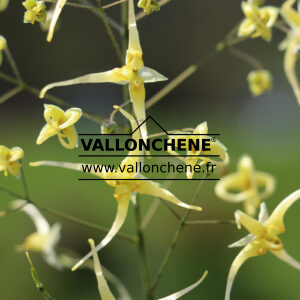Discover with our practical guides how to plant and care for perennials (herbaceous plants):
How to plant perennials
- Choose the right place concerning sunlight and size of your herbaceous plant (you can find more information on our plant labels or on our website in the plant’s information sheet). To understand well “full sun”, for example, don’t be influenced by the place’s orientation (south, north, west or east). It’s the daytime period that counts. “Full sun” means in fact direct sunlight from noon until 5 pm. The size of your herbaceous plant is import to determine if you have to plant it in the first, middle or back row.
- Then water well your new planting (at least 12 liters), directly on the root clod of the plant.
- If you have mulch available (mixture of leaves and pine needles, mostly), cover your freshly closed hole with it (but avoid the basis of the plant). This will diminish the development of weeds and maintain your soil wet for longer periods. In any case, DO NOT USE CUT GRASS (from your lawn or whatever). Avoid compost on cut grass basis!
- Beware of animal urine, especially cats and dogs. This kind of “watering” can be fatal for plants. Urine on evergreens, especially TAXUS baccata, BUXUS and conifers can have the result as systemic herbicides : it destroys the plant by starting where the first contact happened and continues through the rest of the plant. The urine of foxes and badgers can be as dangerous.
How to care for perennials
If you have followed our above planting instructions, the care of your plants will be much easier (concerning weed and watering) :
- Water well during at least 12 months and especially over dry periods. ATTENTION!! It can be dangerous to believe that rain brings enough water. That is often times NOT true. If you want to succeed in gardening and ensure a good watering for your plants, buy a simple rain gauge. It’s the only mean to observe the level of humidity in a garden. A rain gauge is as important as a spade or a hoe. The surveillance of a good humidity is even more significant for evergreen plants, as they show often times too late a lack of water by loosing their leaves or turning yellow or brown. And then any rescue is vain.
- If you don’t have covered your planting area with mulch, open regularly the planting area with a hoe. Thereby, water can easily enter the soil and reach more efficiently the plant’s roots.
- Take off wilted flowers. They take energy from the plants by producing seed. Your plant will be even stronger and nicer next year.
- Weed your garden as the enemy number one of herbaceous plants is weed. Not only it hides herbaceous plants, but it can dominate them and even make them die.
- Clean your herbaceous plants regularly: take off awful leaves and dead flowers to leave space for new ones.
- Cut back your non-evergreen herbaceous plants at the end of the season (grasses at the end of winter).
- During winter, put a stick at the place of your non-evergreen herbaceous plants to NOT forget them.


